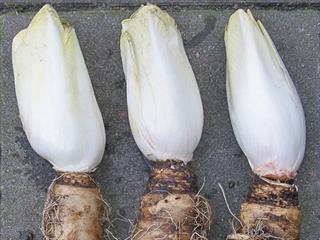
Work is underway to revive South Africa’s chicory industry. Nestlé SA, the Department of Trade and Industry (DTI) and the Eastern Cape provincial government will be collaborating on this initiative.
Nestlé SA is to provide technical support to ensure the quality of chicory produced in KwaZulu-Natal and the Eastern Cape.
“This is a long-term commitment of five years with the DTI to limit imports and encourage local procurement in South Africa,” said Nestlé spokesperson Ravi Pillay.
In this article, we look at the basics of chicory production.
In South Africa, chicory (Cichorium spp) is grown almost solely for the root. This is cut into cubes which are dried, roasted and milled and used for blending with coffee. Chicory is also consumed fresh, usually in salads or as a cooked potherb. The leftover parts of the root which are too small to be cubed are sold as stockfeed.
There are several species of chicory. The Belgian endive or witloof variety (C. endivia) has no fat, no cholesterol and is an excellent source of potassium, Vitamin C and Vitamin A.
Radicchio (C. intybus) also has no fat and no cholesterol and is a good source of vitamins C and E, amongst other nutrients.
Growing chicory
Chicory prefers fertile, well-drained soil rich in organic matter. Loams, silt loams and clay loam soils often produce higher yield than lighter textured sandy soil as the latter has lower water retention ability and the crop suffers moisture stress sooner.
Chicory is a cool-season plant. It grows fastest when conditions are warm and the mean monthly temperature does not exceed 25°C (radicchio grows best when temperatures do not exceed 23°C). The plant can survive moderate but not severe frost.
The seedling is sensitive to moisture stress and hot winds can cause severe stand reductions when the moisture content of the top 15cm of soil is low. Once the plant has a pencil-thick root, it is drought-tolerant. Most of the foliage may die back under very dry conditions, but the plant recovers as soon as soil moisture increases.
Planting
Ensure that the land lies fallow for two to four months before planting. Make the seedbed sufficiently compact so that the seed is in close contact with moist soil particles. Remove vegetation that could interfere with the seedling. Space seeded or transplanted witloof 22,5cm apart in rows 50cm apart. Dense planting will reduce weed pressure. Seeded witloof may be planted three to four weeks before the last frost-free date for the growing area.
Transplants should be planted shortly after the last frost-free date. Plant seeded or transplanted radicchio 20cm apart in rows 30cm apart. Fertilisation will vary according to the conditions in your area, so ask the advice of local successful chicory farmers, your extension officer or your fertiliser rep.
Irrigation
Water chicory regularly, applying 2,5mm to 5mm/ week to keep the soil moist. Either conventional flood irrigation or overhead irrigation is suitable. Use organic mulch around the plant to conserve soil moisture and reduce weed growth. Drought stress during growth will cause slow leaf development and bitter flavours to develop.
Weed control
As noted, spacing the plants closely will help control weeds. You can also use an animal- or tractor-drawn cultivator or hand-hoe between the rows. Be careful to avoid root damage.
Pest and diseases
Common pests include aphids and nematodes. Use an insecticide, insecticidal soap or a strong water stream to remove them. Practising biological control measures will also help. Common diseases are fungal root rot and leaf spot. These are both transmitted by aphids, so controlling aphid numbers will reduce the severity of the diseases.
Source: DAFF, Directorate Plant Production.
Phone Chicory SA at 046 653 0048 or email [email protected].









